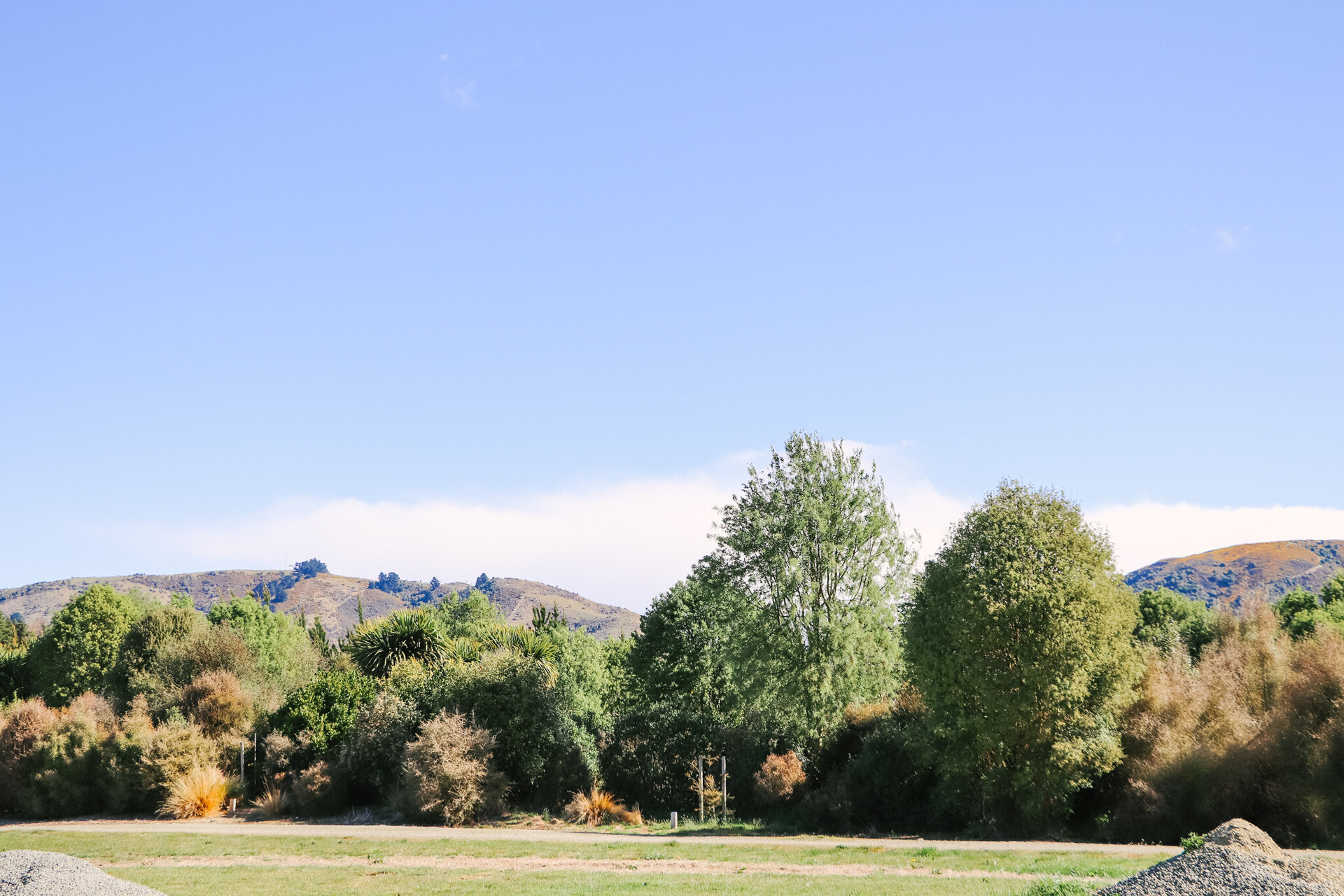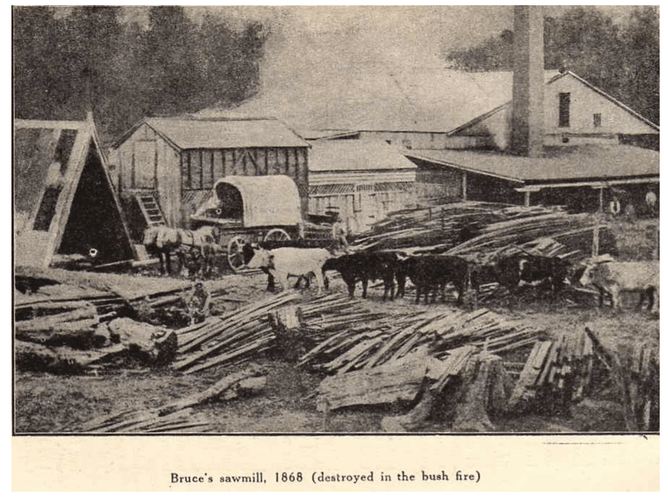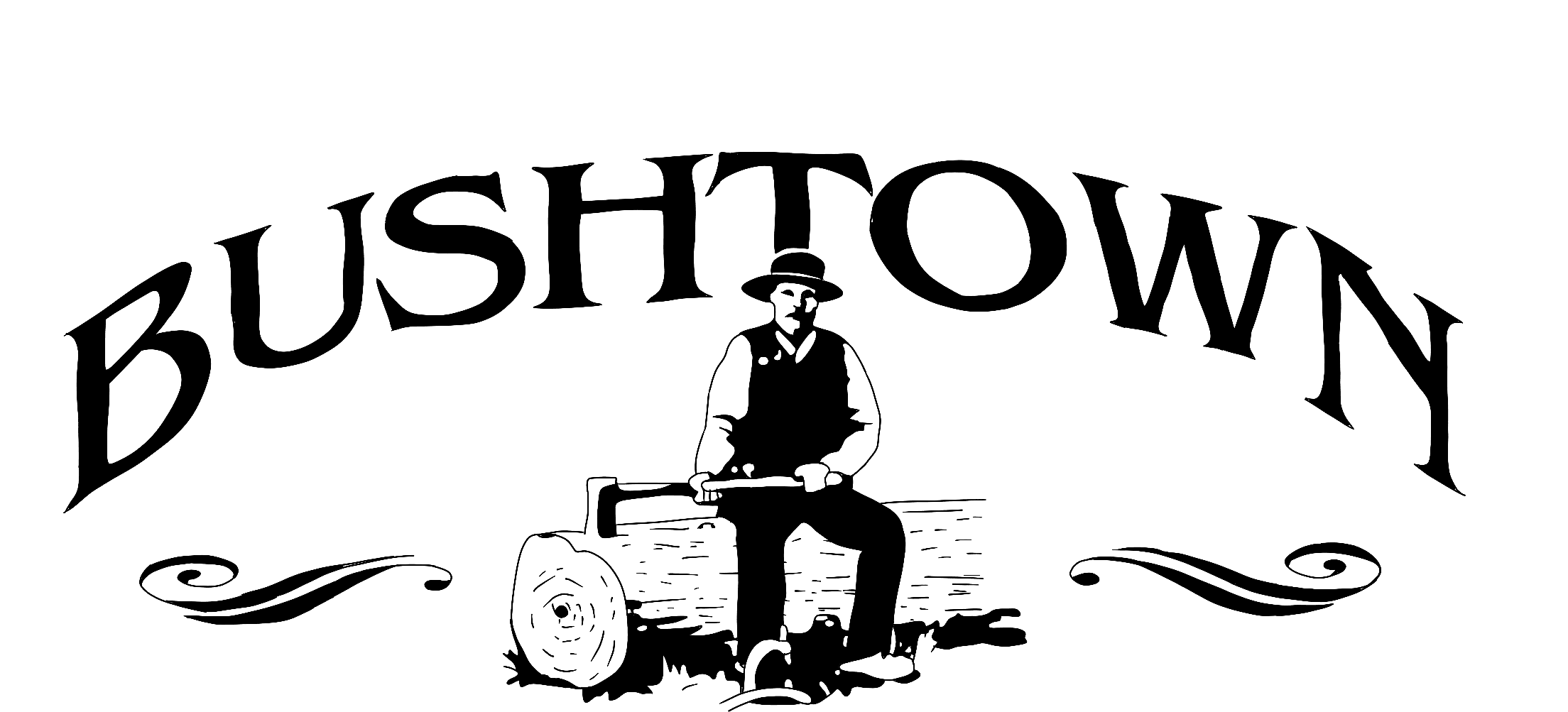Fire began to affect the landscape once the first European settlers arrived. Nowhere was this more so than on the East Coast of the South Island, where the dry vegetation was highly flammable.
There one spark was enough to set a fire racing along a front several kilometers long, especially when one of Canterbury's notorious spring nor-westers was howling along behind it. The first warning of what a careless settlers fire might do came as early as 1853 when 40 kilometers of Banks Peninsula forest went up in smoke in a fire that raged for three weeks.
The spring of 1859 was particularly dry throughout the eastern districts. In October a fire swept through the Arowhenua Bush in South Canterbury destroying, among other things, £2,000 worth of sawn timber. Fires broke out everywhere, many caused by sparks from bushworkers' billies. One such accidental burn completed the devastation of the Arowhenua Bush in January 1863, taking with it sawn timber, fencing and houses. Then, as on several occasions in the future, settlers were lucky to escape with their lives.
South Canterbury remained a springtime fire risk for as long as the mill workers attacked the forests. The bush area around Waimate had been home to a small but thriving sawmilling industry from the early 1860's. Where there are now paddocks over 9000 hectares of black and white pines, totara, ngaio, broadleaf and other trees once stood. From the early 1860's onwards, though, more and more trees went to feed the demand for timber from the fast growing seaports of Timaru and Oamaru. The destruction gathered pace after 1865 when James Bruce installed the first steam sawmill at what is now known as Garland's Bridge.
By 1877 five sawmills were operating at Waimate.
For every tree sacrificed for productive use, several were squandered. Fire claimed many. The bush suffered its first major fire on 18th November 1865 when sparks from a billy ignited a patch of dry fern. The sawmillers escaped with their lives, but precious little else. It was a grim warning of what lay in store.
As early as September 1863 the Canterbury Provincial Government had passed a Bush Fire Ordinance, designed to reduce the fire danger, but this legislation had never become law. Fires continued, most the result of pure carelessness, travellers forgetting to extinguish their fires, shepherds burning grass land too near the bush, or foresters billies setting scrub alight.
The next few years brought a distressing number of big fires. In November 1876 one major blaze burned out a large area of bush,forcing many to take to their heels. The most disastrous, however, was the conflagration of 1878, which swept away most of the remaining bush and came close to taking the town of Waimate with it.


